How to Prepare for Long Term Travel
So you’ve decided to go off and long term travel. Congrats! As someone who has packed up her life and headed off into the unknown on a number of occasions, I can confidently tell you that you’re about to embark on something amazing. Something that will, undoubtedly, change your life and provide experiences and memories that you will cherish forever.
But now that you’ve made the decision to do it, the hard part is next – starting to plan. With so many things to do, arrange and think about, it can be overwhelming. Where to start? What to prioritise? Trust me, we’ve all been there. You are not alone.
If you’re having questions and in need of some guidance, well don’t worry, because we’ve got you covered.
We’ve spent a lot of time travelling and that means a lot of time preparing (and testing these preparations out on the road).
We’ve put together this guide to get some of the tedious work out of the way for you, so that you can dive in and get ready for your big trip!
Make a Timeline of the Tasks You Need to Do
Yes, this may sound mundane, but there’s a long to do when planning for long term travel, so setting everything out in bite-sized pieces will really help you plan and organise your time in the lead up to take off.
I prefer Google Docs, but use whatever format you feel most comfortable with.
Make a timeline, starting from the current date and leading all the way up to departure. When you’ve read this guide and are across everything you need to do, set it out in your timeline at the relevant time each task falls due.
This way, you have a visual representation in a manageable format.
Importantly, check the timeline regularly to keep yourself on task. Or, if you’re travelling with a partner, remind them to check it regularly to stay on track (ahem, Zandy).
Read: 10 Travel Essentials We Never Leave Home Without
Check Your Passport Validity
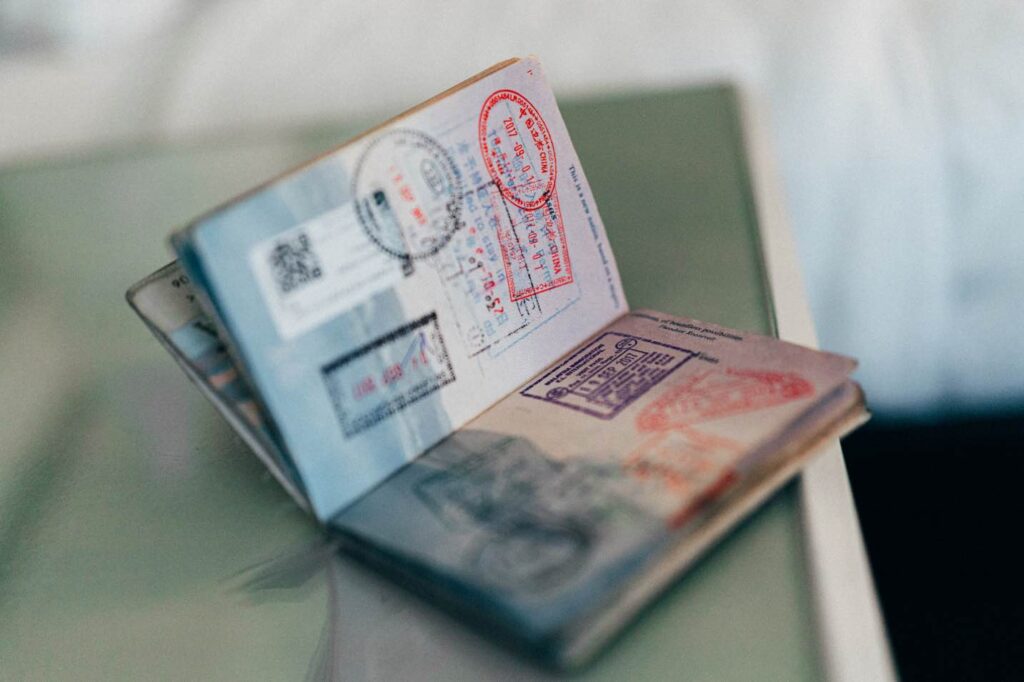
First step: pull out your passport and look at when it expires. Most countries require a minimum of 6 months validity to enter, so ensure you’ve got enough time left on yours. If you’re setting off on long term travel and there’s not much time left, it’s probably a good idea to renew.
Also, check that you have enough free pages in it for stamps and visas.
Should your travels really extend and you find your passport does expire on the road, you will be able to renew it at your embassy or consulate abroad – just remember that this might take a bit of time so you’ll need to budget this in!
Come Up With a Budget
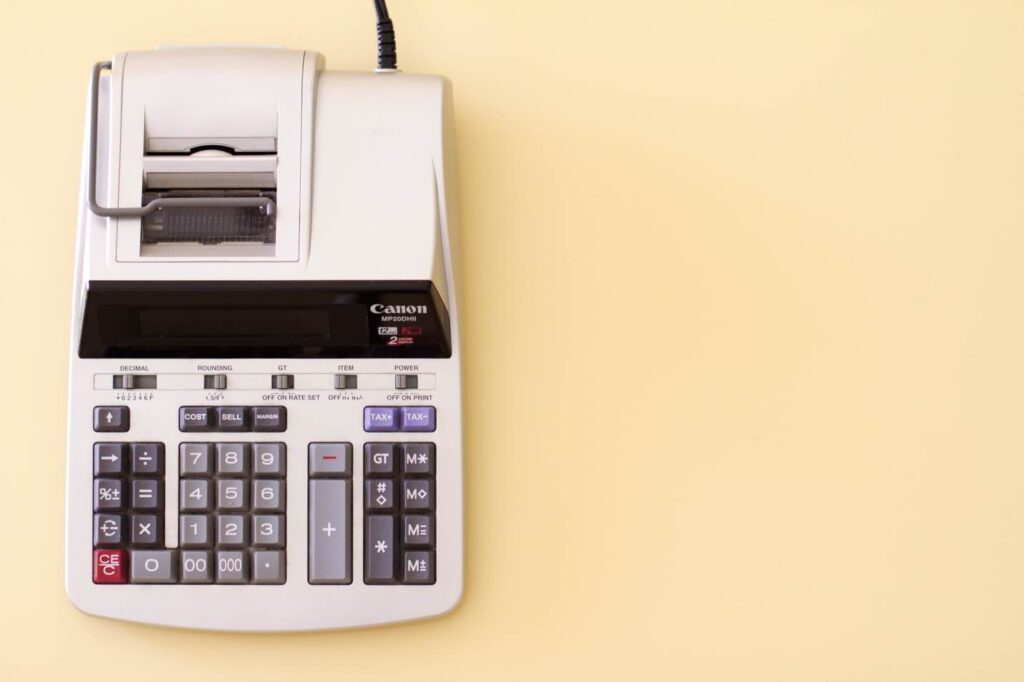
Now, make your budget. It’s a good idea to have a plan of how much you will roughly spend per day. Obviously, this will be influenced by the places you choose to visit, so do a bit of research on travel expenses and figure out how much you’ll need to sustain yourself to travel in your preferred style.
When making your budget, be realistic and honest with yourself. There’s nothing worse than cutting your long term travel short because your travel style was completely different than you budgeted for.
Then, on the road, download a trip budgeting app. This lets you keep track of your spending and keep you on budget. If you’re going for longevity, this is important.
We use Travel Spend. It’s intuitive, works offline, free (for one trip) and you can share a trip with a travel buddy.
Sort Out Your Money

This is so important. When I first started travelling, back in 2004, travellers had so few choices. Traveller’s cheques were still a thing. Yes, really. I even brought some on my first trip! In those days, it was either that, cash, or using your debit card (that you would pay dearly for in international fees). How things have changed!
Now, there are so many ways to manage your money and spending abroad in ways that minimise fees. By making the right choices, you can literally save hundreds, if not thousands of dollars.
Fee-Free Bank Accounts
Open a bank account that allows fee-free international transactions and ATM use. This allows you to spend directly on your debit or credit card overseas without the foreign transaction fee and you can take money out at an ATM without incurring any fees.
In Australia, there are a few choices. We’ve opted for ING for our joint account and credit card.
They offer the following:
- 100% rebate of ING International ATM withdrawal fee of $2.50 and 100% of the ATM fee; and
- 100% rebate of ING international transaction fee of 2.5% of the amount of the international transaction.
To be eligible for the above rebates, you simply have to deposit $1000 into your account each month and make 5 cleared transactions each month. Once this is done, the rebate will be applied for the following month. Over the course of a long trip, this can save a lot of money.
For example, in Thailand, each ATM charges approx $9.50 to withdraw money. On top of that, the international ATM withdrawal fee is $2.50, so you’re looking at $12 in fees per withdrawal. With the right bank account, you can eliminate this fee. Every. Single. Time.
If possible, try to get both a Mastercard and Visa debit card. Some countries and ATMs are picky and we often find that one can be more available than the other. So in addition to our joint ING One Visa Debit Card, we also each have a personal Macquarie Mastercard Debit Card (which also has zero international transaction fees and no international ATM withdrawal fee). This is a backup in case we find ourselves in a place that doesn’t accept Visa debit cards.
Where to? Check out Istanbul’s Top 5 Coolest Neighbourhoods
How to Prepare for Long Term Travel: Credit Card
Also, get a credit card. They’re more secure in that the insurance often covers fraudulent transactions. We have both an ING credit card and debit card, which are linked. We put as much onto the credit card as possible and the monthly bill is automatically paid out of our debit account. Seamless!
When you’re all set up and ready to go, notify your banks of overseas travel. You do not want to risk having your card cancelled during your trip!
Also, try to sign up for a credit card that offers frequent flyer points. That way, you can use the points to book some of your flights along the way.
Travel Money Card
While you’re signing up for so many new accounts, get a travel money card too.
A travel money card is a card that allows you to load several foreign currencies at fixed exchange rates. Like debit and credit cards, a travel money card can be used to make purchases in stores, online, and to withdraw at ATMs while travelling.
The good thing about these is that you can lock in good exchange rates and then spend in the local currency.
We use Wise. They’re a really good company, offer great exchange rates and their app is intuitive and easy to use.
Tips for use:
- Make sure you load up when the exchange rate is favourable, but avoid loading too much though as you may be charged a fee if you don’t use it all and want to change it back.
- Make sure the card has the currencies you’ll use
- Remember to cancel the card when you’re done as it may have inactivity fees.
Get yourself a Wise card here
Overall, we recommend using a combination of the above. It’s always a good idea to have a few different options. Don’t put all your eggs in one basket, or have all your funds available through one card.
And finally, always take some cash – preferably, USD (like it or hate it, it’s still king). I always hide some USD somewhere in my bag as an emergency stash (and then generally forget about it and get really excited when I find it).
Research Visas and COVID Entry Requirements
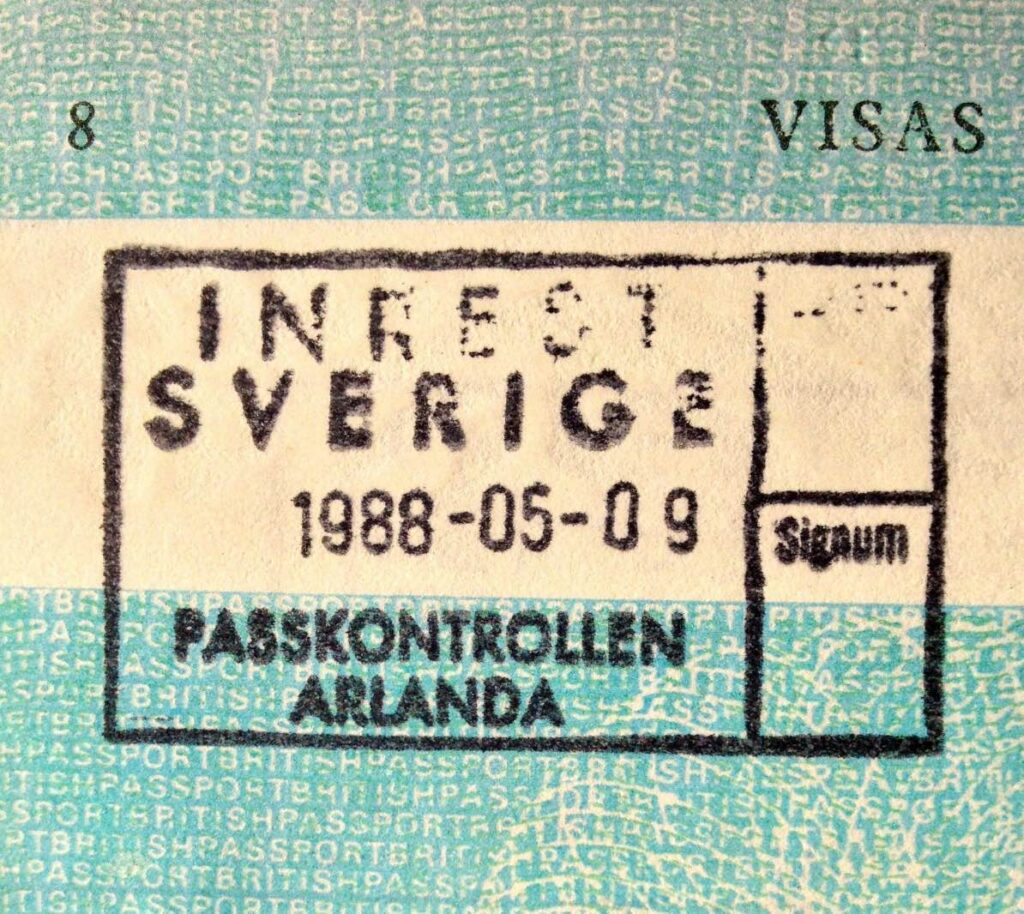
This is such an important one, yet it’s amazing how often it’s overlooked/forgotten.
Always look into entry requirements for the countries you want to visit. Some countries grant visas on arrival, others you have to apply for in advance and some require arranging a visa in advance ONLY from your home country. So have a quick search to figure out what you’ll need to do.
And now, on top of general entry requirements, there are specific COVID requirements. So just in case you were thinking, ‘man, I really wish I could do more paperwork’, well, this is your time to shine.
Now that we’re in a living-with-COVID world, each country is instituting their own COVID entry requirements. Usually vaccination certificates suffice, but some may still require a PCR test. Have a glimpse through and make sure you can satisfy all the requirements.
If you’re transiting through any country, do not forget to check what’s required to do so, as again, they may have COVID requirements too.
Get Your Vaccinations – Including COVID Vaccinations

Travel vaccinations have been around for a while and now COVID is added to the scene.
Find out if you need any other jabs – common ones include Typhoid Fever, Hepatitis A and B, DPT and Yellow Fever. If you’re getting your Yellow Fever, make sure this is recorded as this will also be required for entry to multiple countries.
Get Your Proof of COVID Vaccination
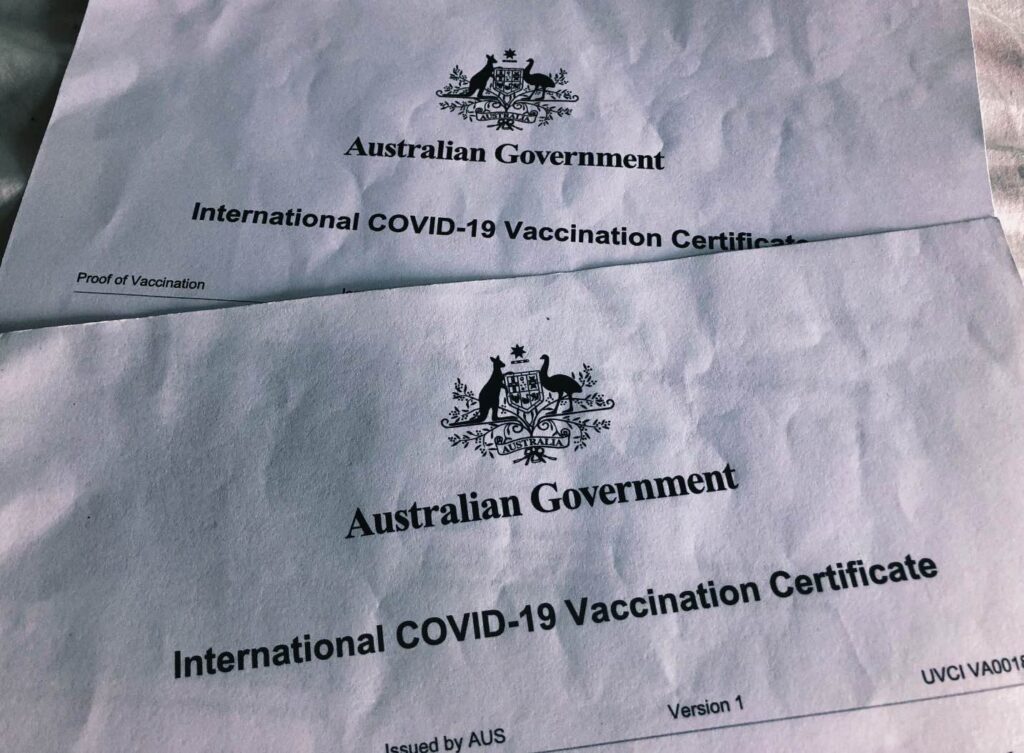
This is key to COVID travel. Getting proof of vaccination is your ticket to entry. Showing you’re double vaxxed is crucial to entering most countries. Make multiple copies, if possible. Though admittedly, much of the world has now moved on and this is getting less relevant by the day.
Every country has a different system for demonstrating proof of vaccination, but we’ll outline the Australian process, as that’s what we went through.
In Australia, if you have Medicare, it’s an easy process. Simply go to your MyGov account and download your International Covid Vaccine Certificate via the Medicare page.
If you don’t have Medicare, well it’s a bit more work. You need to call the Australian Immunisation Register or visit Services Australia and request a copy to be sent to your address. At the time of writing, those of us not entitled to Medicare are unable to get a copy online. It’s paper only, baby.
It takes a few weeks (around 20 days or so) to get the certificate mailed to you, so apply well in advance. If you are in a rush, you can get one printed on the spot at a Services Australia branch (but be prepared to wait a while!).
When you get your certificate, double-check it to ensure everything is filled out correctly. You need both the country of administration and the batch number for the certificate to be valid.
Yes, this may sound like common sense, but you’d be surprised. Our first certificates were missing crucial information about our first dose batch number and were invalid. We only knew this because we had researched extensively what was required to prove vaccination overseas. So ensure everything is filled out and if anything on the certificate is blank or says ‘not recorded’ – get that fixed ASAP.
Stock Up On Any Essential Medications
Visit your GP and stock up on any essential medications you’ll need. For you fellow contact lens wearers, this also means getting enough contact lenses as well!
Research and Book your Flights
Ideally, your first flight should be booked at least 6 months in advance to ensure that you get the best deal possible. Spend a couple of days (or longer) on Skyscanner to assess your options and play around with the dates to find the best deals. Another pro tip: check the flight routing options to see if it’s cheaper to fly into a similar airport. For example, if you’re travelling to Thailand, compare flights to both Bangkok and Chiang Mai. Sometimes the results may surprise you.
Looking for cheap flights? Skyscanner is the place to go
How to Prepare for Long Term Travel: International Driver’s License
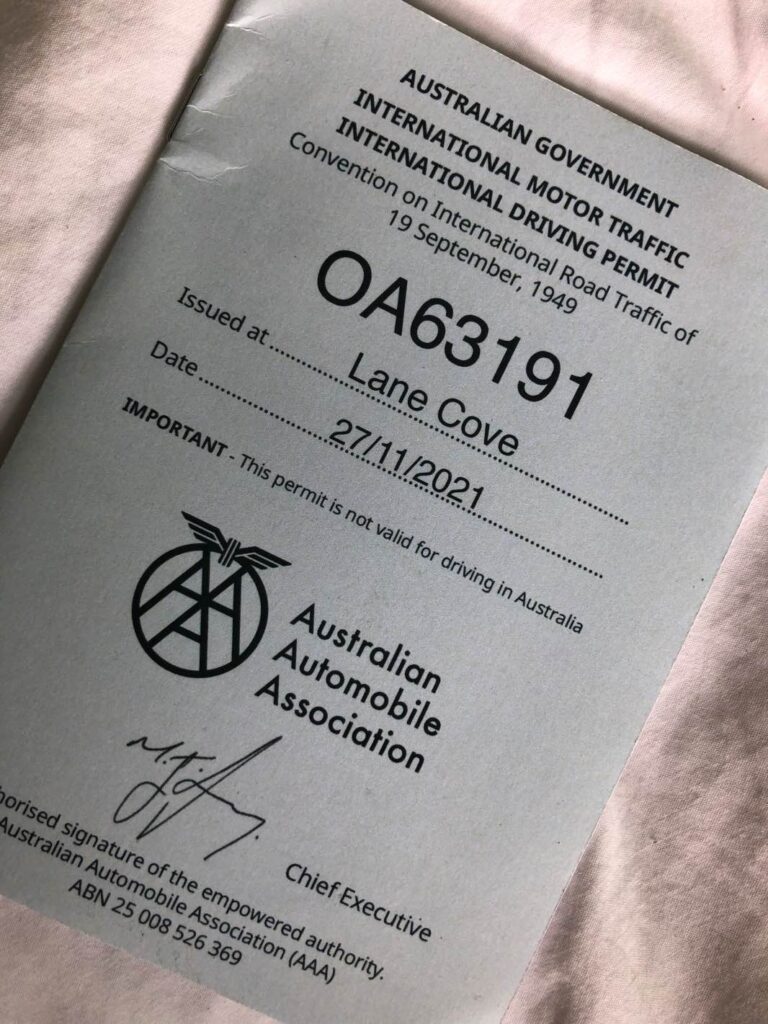
Although it’s not required everywhere, it gives you peace of mind. Imagine not being able to rent a car because you didn’t have one.
In Australia, this is really easy to get. You can apply online here and it costs $42, plus postage.
Make Copies of All Important Documents
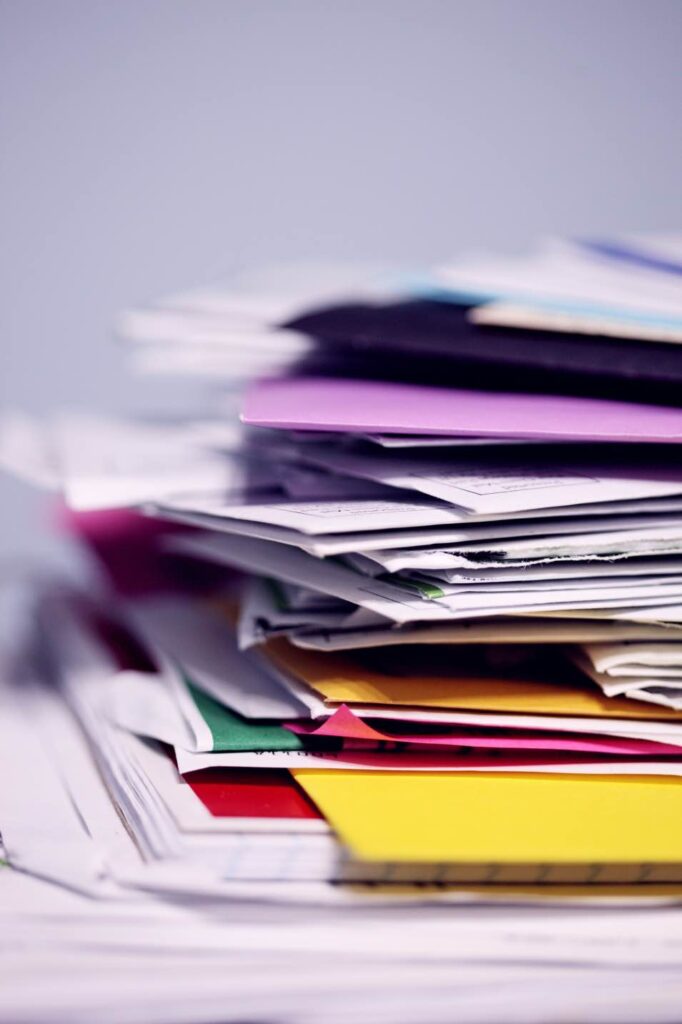
Make sure to make physical and digital copies of all important documents. This way, if you lose anything, you have an easy backup. Also, you may need to show these documents through your travels – if you’re in an emergency and need to access your travel insurance, you don’t want to have to depend on WiFi to get the numbers you need.
I also prefer handing over a copy of my passport, rather than the actual one.
Important ones to include are:
- Passport
- Health insurance
- COVID vaccination
Get Some Spare Passport Photos
It’s always a good idea to carry a few spare passport-sized photos with you. These will come in handy for applying for visas on the road, or anything else bureaucratic you may encounter.
Arrange Travel Insurance
As the old saying goes, if you can’t afford travel insurance, then you can’t afford to travel, and we couldn’t agree more. Although I am guilty of having travelled insurance-less in my younger, more reckless years, there have been many occasions where it has also really saved my butt. In the scheme of things, it doesn’t cost that much and can be really handy in an emergency.
Our favourite is Safety Wing. They’re affordable, flexible and have a broad range of coverage.
To get a Safety Wing quote, click here, or simply fill out your details in the box below.
Begin Researching Your Destination

This is the fun part! Start looking into your destination country (or countries).
Find out where you want to go, research the climate, any major festivals, what the transportation’s like, what kind of food you can expect, the culture and customs and most importantly, how to interact politely and respectfully with people. This also includes learning any major taboos (for example, in Thailand not pointing your feet at someone or touching someone’s head).
We love to head to the library and pick out a few travel guides to peruse through. Our go-to travel guides are always Bradt. They specialise in off the beaten track destinations, plus their books are way more comprehensive than anything else out there.
Browse Bradt’s catalogue here
We also like to read through other travel blogs. This helps excite, educate and inspire us on our potential destinations. After all, the dreaming stage is one of the best!
Become a Minimalist
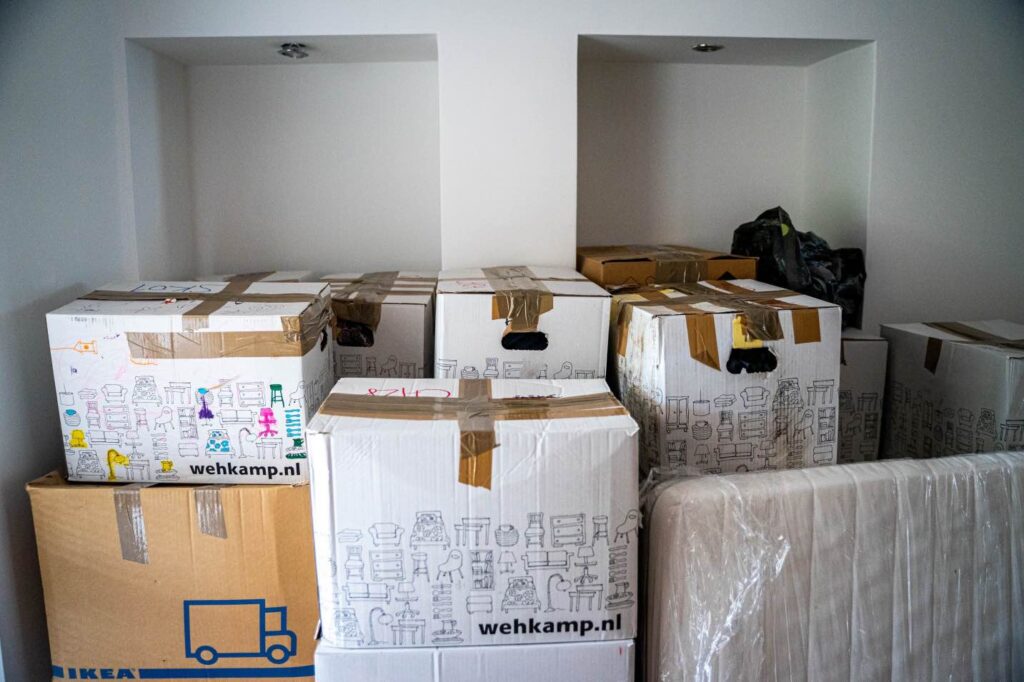
If you’re really serious about long term travel, leave as little behind as possible. You’re going to forget about it and it’s not worth the storage.
When I left Canada in 2011, I left quite a few boxes at my parents’ house. My first visit back was more than 4 years later, and when I finally went through those boxes, I didn’t want anything inside of them.
So what we’re saying is, get rid of your stuff!
Some tips on getting rid of all those things you have:
- Advertise your items on Facebook Marketplace, your local community marketplace (i.e., Gumtree in Australia, Kijiji in Canada), or eBay as early as possible. Some things can take time to move and you don’t want to be overwhelmed at the last minute (because you’ll have so many other things to do!).
- Have a yard sale. They’re fun and social and a great way to get rid of small things. You may need to have a few. We had 3!
- Give items away to your friends. They’ll be grateful, plus it feels good to give things to people you know.
Getting rid of stuff feels great! (And is slightly addictive). It can also help your travel fund.
For what you decide to store, make arrangements for where you will store that stuff.
Read next: Best of Thailand Off the Beaten Path
Arrange Your First Night’s Accommodation
We’re big fans of sorting out where we’re going to stay for the first night. I’ve been doing this since my very first trip 18 years ago. I know that when I land in a new country and am usually jet-lagged and/or tired and disoriented, the last thing I want to be doing is looking around for a place to sleep.
Arranging this in advance ensures your entry into a new country is more streamlined and comfortable. Do it ahead of time and trust us, your future self will be thanking you.
We always use Booking.com as we find they have the most competitive rates.
Learn a Bit of Basic Language
We encourage responsible travel and a big pillar is always making an effort to learn even a few basic phrases in the local language. It shows respect and courtesy, plus it’s a lot of fun. Even if you completely butcher the word/phrase, locals will love it, you’ll make a lot of friends and you’ll find your experience has a lot more depth to it.
Get a Few Essential Apps
Gone are the days when you had to memorise exchange rates or stock up on paper maps. There is now an app for anything and downloading a few essential ones can help make travelling so much easier.
Here are a few we use and recommend:
Navigation
- Maps.me. This app provides offline maps for literally the entire world. When you have wifi, you can download maps of areas you’ll be in and utilise them when you’re offline. A lifesaver!
Currency Conversion
- My currency converter. This is a free currency converter with live exchange rates for 180+ currencies. No more guessing how much you’re spending.
- Wise. With Wise, you can send, spend, convert and receive money internationally. You can also get a Wise Travel Card for overseas spending. They offer a great exchange rate.
Camping
- iOverlander. A database of places for overlanders and travellers. It includes camping, hotels, restaurants, mechanics, water, propane filling and many other categories.
Translation
- Google Translate. Make sure you download the language you want, so you can use it offline.
Hiking
- AllTrails. The app has over 200,000+ hand-curated trail maps for hikers, mountain bikers and trail runners, plus reviews and photos.
- Wikiloc. With more than 11.6M trails around the world, this is great for finding routes and maps.
Budgeting
- Travel Spend. A very useful travel budgeting app.
Language
- Drops. This is a fun little tool for learning vocab in different languages (43 and counting). Drops has fun, fast-paced games to learn new words and you’re limited to just 5 minutes a day, so it feels manageable.
Accommodation
- Booking. The most commonly used accommodation app worldwide. Be sure to try to get to various ‘Genius’ levels to get discounts and perks.
- Couchsurfing. While it’s not as good as it used to be, and you now must pay an annual fee, we’re still fans of Couchsurfing. It allows you to connect with locals, whether to get a bed/couch to crash on or simply to hang out. We’ve made many friends around the world through Couchsurfing and have had authentic experiences we otherwise wouldn’t have been able to.
Flights
- Skyscanner. Our pick on where to book the cheapest flights.
Buy Any Clothing or Gear You Will Need

I’ve travelled both with travel-specific clothing and gear and without (i.e., just using clothes and items I already had). And having done both, I highly recommend buying specific clothing and gear for long term travel. We’re talking smart fibres for clothing that thermo-regulate and wick moisture away (while keeping stink at bay) and high-quality items that are going to last the test of time (and repeated smushing in your bag).
Think about where you’re going (hot v cold climate), what activities you’ll be doing (trekking v museum-hopping) and what’s appropriate in your destinations (i.e., don’t bring a mini-skirt to a conservative country).
For clothing, you can’t go wrong with merino wool. It’s great for thermo-regulation, wicking sweat away and can go for many wears without a wash. It’s also a good idea to plan your clothes out to ensure things work well together and can be mixed and matched for multi-functionality. With the correct planning, you can significantly downsize the number of clothes you bring.
For your gear, look for high-quality, compact and lightweight items. They will be worth every single penny when you’re lugging that backpack around for months.
Cancel Anything At Home
Make sure to cancel anything at home that you won’t be using. This includes things like your phone, health insurance, Netflix account and any other direct debits.
How to Prepare for Long Term Travel: Pack an Open Mind
Above all, be flexible and have an open mind. Nothing always goes as planned, especially during long term travel. Things might change and so it’s worthwhile to be open to flying by the seat of your pants. Some of the best travel experiences happen this way.
Finally, always remember that no matter how well prepared you are, you’re going to make mistakes and you’re probably going to forget something. That’s inevitable. We all do it. It’s also part of the experience. Be okay with that. Take those moments as a time to reflect and learn from. They provide great learning opportunities.
Also, when shit happens, remember to laugh – nothing beats a good travel story!
And with all that said, you should be good to go. Follow these tips and you can’t go wrong. We’re so excited for you – have a great time!
Looking for some travel inspiration? Read our Guide to Koh Adang: Thailand’s Best Kept Secret Island
Like this post? Pin it for later!
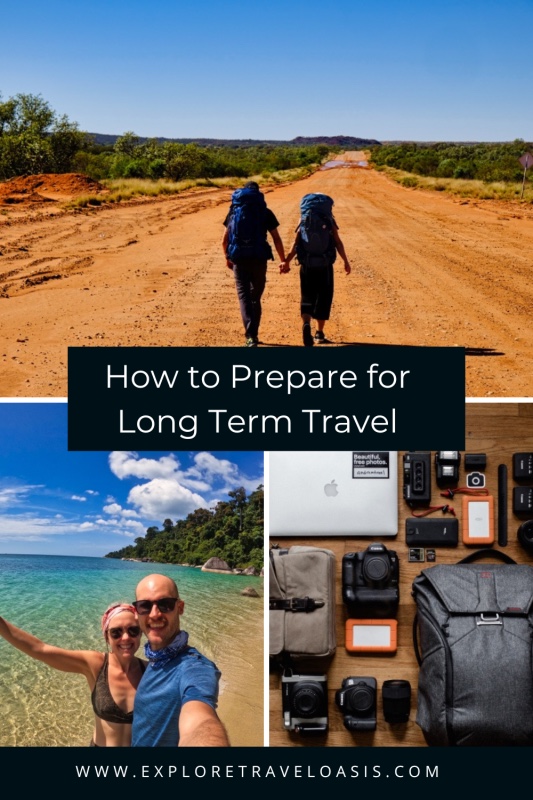
Disclaimer: This post contains affiliate links. This means that if you buy or book anything through them, we’ll earn a small commission at no extra cost to you. This helps us run this website and create comprehensive guides to help you get off the beaten track. We only recommend products and/or services that we use ourselves and trust.

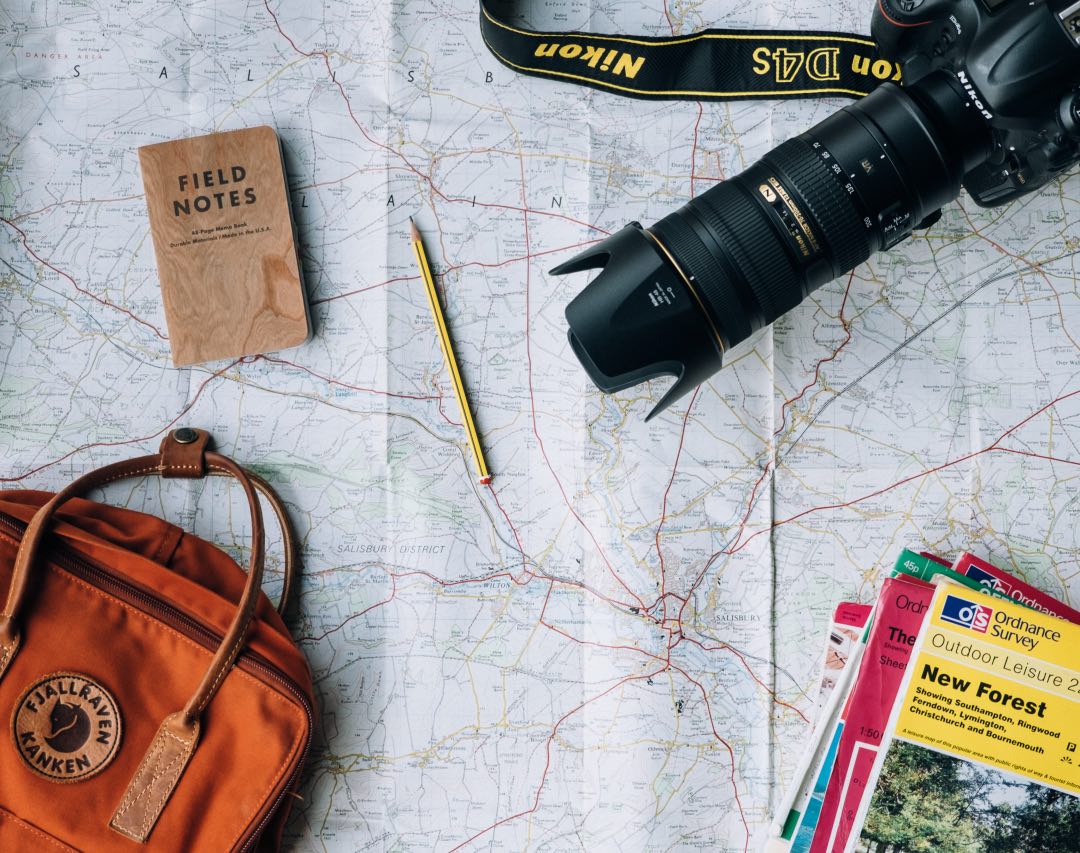

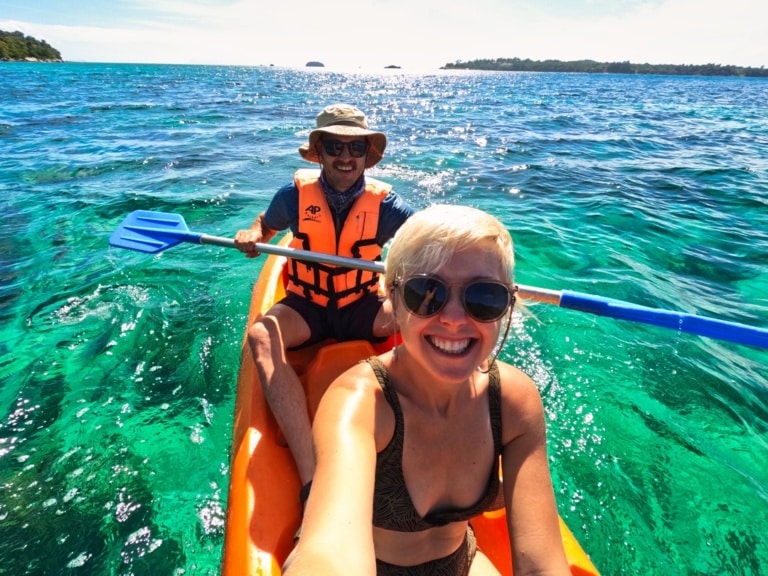
I love travelling and this is a great list to keep in mind! Thank you for the useful tips!
Thank you so much. We’re so glad that you found it helpful. 🙂